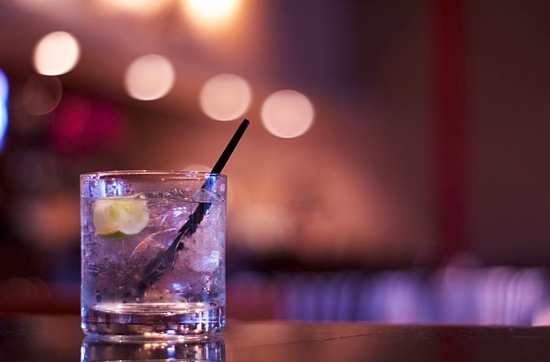Behind ABC’s food-to-alcohol ratio
The ratio has come a long way since it debuted in 1968.

The only Golden ratio that really matters to Virginia restaurant owners is the food-to-alcohol ratio. That ratio is 45-to-55, meaning that for every $45 restaurants make in food, they must make no more than $55 from liquor drinks.
State legislators created the ratio to stop excessive alcohol consumption.
“The General Assembly decided they didn’t want watering holes, they didn’t want to go back to the saloon days,” said Curtis Coleburn, Alcohol Beverage Control (ABC) Chief Operating Officer, describing the General Assembly’s intentions. “They wanted to [only] allow cocktails in full service restaurants and dining establishments.”
While some restaurant owners criticize the ratio (more on that in a moment), it’s a more lax restriction compared to its forebears.
In 1934, the year Prohibition ended in practice, Virginia legislators still forbade restaurants from selling liquor drinks altogether. “The General Assembly did not allow on-premises consumption of mixed drinks,” Coleburn said.
That changed in 1968, when the General Assembly passed its first food-to-alcohol ratio. “In 1968, the original ratio said that mixed beverages could only be served in restaurants with seating capacity at tables for not less than 50 persons,” Coleburn said. In addition, restaurants had to sell more food (i.e. at least 51 percent of its total sales) than alcohol.
Two things: first, back then “alcohol” included all beer, wine, and liquor that restaurant’s served (the ratio today only counts liquor). Second, back then “food” meant full meals, and not appetizers, desserts, etc. that the current ratio considers. “You had to sell more full meals than you did beverages, and that included beer, wine, and mixed beverages,” Coleburn said. “So you added the total alcohol [sales], and your meal sales had to exceed that.”
For over 20 years that was the law of the land for Virginia restaurants. Then in 1980, the General Assembly created the 45-to-55 (food-to-drink) ratio. While all alcohol sales (beer, wine, and liquor) were still factored into the ratio, legislators made the ratio more lax by factoring all food items (appetizers, desserts, etc.) into it. That meant restaurants could sell more drinks.
In 1990, the General Assembly changed the law to its current form. “Food sales and nonalcoholic beverage sales have to be 45 percent of the total of food plus mixed beverages,” Coleburn said. “Today beer and wine sales don’t even enter into the equation. You can sell as much of those as you want.”
Restaurants selling alcohol today have it much easier than restaurants did in 1968. “You can sell a helluva lot more alcohol, as compared to food, than you could at the beginning,” Coleburn said.
But some restaurant owners don’t think its enough.
“I personally don’t think it’s necessary,” said Jay Bayer, owner of Saison in Jackson Ward, about the food-to-drink ratio. “It assumes that the restaurant can’t responsibly serve [alcohol].”
While he sympathizes with the “spirit” of the law, namely to restrict the harmful effects over-serving has on the community, he feels it can stymie restaurants.
“For a place like Saison, it can become an issue because our drinks aren’t cheap, so we don’t sell a ton in number because we’re not selling $2 vodka shots, we’re selling $10-$11 cocktails….[so] the ratio of food-to-alcohol makes it difficult to us.”
It was that very complaint from other restaurants that prompted the General Assembly in 2009 to sanction a two-year pilot project to test an alternate method to determine a more equitable food-to-alcohol ratio. One based, not on sales, but on proof gallons of spirits.
“Rather than base it upon food sales versus liquor sales in dollars, how about food sales based upon the amount of alcohol the bars were selling,” Coleburn said. ABC devised a new ratio: $350 of food sales per proof gallon of spirits. ABC devised the pilot ratio from crunching data on restaurants’ liquor supply sales.1
For two years, select restaurants across the state were allowed to qualify for either the in-law ratio or the pilot ratio. In 2011, ABC reported their findings to the General Assembly.
“It didn’t make much difference,” Coleburn said about the 23 annual reports ABC pored over and presented. “It didn’t make a difference in 17 of the 23 reports. The alternative method didn’t hurt them [restaurants] or help them.” In only two instances did the pilot ratio help restaurants, Coleburn said. In four instances the pilot ratio actually hurt restaurants.
“So it was kind of a wash. It didn’t change anything in the results,” he said. “We reported it to the General Assembly and they never did anything with it.”
So Virginia restaurants will continue to abide by the 45-to-55 ratio for the foreseeable future. While restaurant owners like Jay Bayer of Saison lament the ratio, some aren’t too bothered by it.
“[It] makes us a more rounded-out place,” said Mattias Hägglund, bar manager at Heritage, about the balance of food and alcohol. He said The Fan restaurant sets out to serve quality from both the kitchen and the bar, even if the ratio didn’t exist.
But he acknowledges that the state’s food-to-drink ratio keeps out world-class cocktail lounges, like New York City’s Death + Company. That’s where Hägglund had the “eye opening cocktail experience” that would inspire his career of tending bar. “That’s a place that would have a very tough time hitting that ratio,” he said.
- Which they had on hand as ABC sells liquor to all Virginia restaurants. ↩
photo by Joel Olives
-
Recommend this
on Facebook -

Report an error
-

Subscribe to our
Weekly Digest





There are 3 reader comments. Read them.